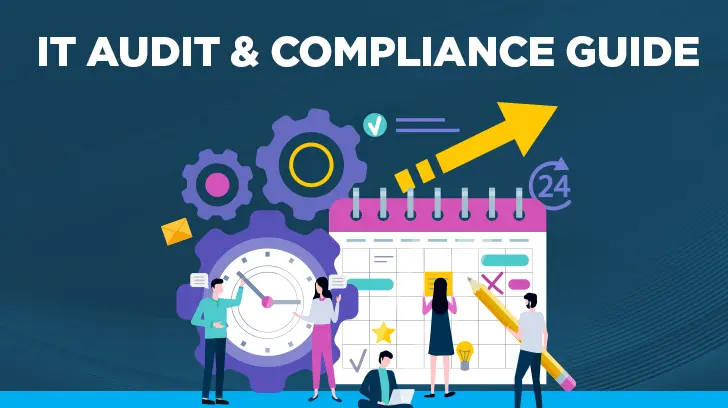What to Expect During an IT Audit (And How to Ace It)

Don’t Panic: IT Audits Are a Good Thing
When small business owners hear the word “audit,” they picture suits, fines, and headaches.
But an IT audit isn’t about punishment—it’s about protection.
In today’s world of ransomware, compliance regulations, and cyber insurance requirements, IT audits are a critical part of smart business operations. Whether you’re preparing for a HIPAA review, a cyber insurance policy renewal, or just want to know your blind spots, an audit helps you see where you stand—and how to improve.
In this post, we’ll explain what to expect during an IT audit, why it matters, and how to pass with flying colors.
What Is an IT Audit?
An IT audit is a structured review of your company’s technology systems, policies, and processes. It’s designed to:
- Identify vulnerabilities
- Verify compliance with regulations (like HIPAA, FTC Safeguards Rule, or PCI)
- Ensure data protection best practices
- Evaluate system performance and reliability
- Recommend improvements
Think of it as a checkup for your IT health—and a chance to prevent costly downtime, data loss, or legal trouble before it happens.
Who Performs IT Audits?
IT audits can be performed by:
- Your internal IT department (if applicable)
- An independent IT consultant
- A managed service provider (MSP) like NextGEN IT Solutions
- A regulatory body or insurer (in compliance contexts)
We often perform internal pre-audits for our clients to prepare them for formal reviews—especially in healthcare, finance, and education.
What Does an IT Audit Cover?
While each audit is unique, here’s what a typical small business audit evaluates:
1. Network Security
- Firewall configuration
- Remote access policies
- Wi-Fi security
- Segmentation and VLAN use
- Intrusion prevention systems
2. Endpoint Protection
- Antivirus/EDR solutions
- Patch management
- Device encryption
- Admin privilege controls
3. User Access Controls
- Password policies
- Multi-factor authentication (MFA)
- Least privilege access
- Offboarding procedures
4. Data Backup and Disaster Recovery
- Backup frequency
- Off-site/cloud redundancy
- Recovery time objective (RTO)
- Recovery point objective (RPO)
5. Compliance Readiness
- HIPAA or FTC Safeguards compliance
- Policy documentation
- Risk assessments
- Security awareness training logs
6. Cloud and SaaS Security
- Microsoft 365/Google Workspace controls
- Email filtering and spam protection
- Secure file sharing
- Shadow IT (unapproved apps in use)
7. Physical and Environmental Controls
- Locked server/network closets
- Security camera integration
- Fire suppression and surge protection
What to Expect During the Audit Process
🗓️ Step 1: Pre-Audit Discovery
You’ll be asked questions like:
- How many users and devices do you have?
- What industry-specific regulations apply to you?
- What systems and platforms are you using?
- Who manages your IT today?
We’ll also review existing documentation (if any).
🧪 Step 2: Technical Assessment
Using a mix of tools and manual checks, we’ll scan for:
- Missing security patches
- Misconfigured systems
- Expired antivirus licenses
- Unprotected devices
- Firewall and DNS settings
We may also run vulnerability scans if required.
📋 Step 3: Policy and Process Review
We’ll assess your:
- Acceptable use policies
- Backup plans
- Incident response protocols
- Employee training programs
- Vendor risk management procedures
📈 Step 4: Risk Scoring and Reporting
You’ll receive a clear report showing:
- Risk levels (low, medium, high)
- Gaps between current setup and best practices
- Compliance deficiencies
- Recommended next steps
Our report is written in plain English—no tech-speak overload.
✅ Step 5: Remediation Plan
Based on the findings, we’ll help you:
- Prioritize risks
- Fix critical vulnerabilities
- Improve compliance posture
- Implement new safeguards
- Document everything
How to Ace Your Next IT Audit
Want to turn your audit from stressful to successful? Here’s how:
✔️ Be Proactive
Don’t wait until an auditor calls. Conduct an internal audit annually to stay ahead.
✔️ Work With an MSP
A managed service provider like NextGEN IT Solutions can audit your setup, fix issues, and support you through any third-party review.
✔️ Document Everything
Auditors love documentation. Keep records of:
- Policies
- Security awareness training
- Software licenses
- Backup logs
- Vendor agreements
✔️ Train Your Staff
Your weakest link is often a human. Invest in regular phishing training and password hygiene refreshers.
✔️ Patch Promptly
Keep your systems, firewalls, and applications up to date to eliminate easy attack vectors.
Real-World Example: HIPAA Audit Prep Success
A small physical therapy office in Western PA came to us nervous about an upcoming HIPAA audit.
We performed a pre-audit, found:
- No MFA on email
- No documented incident response plan
- Weak firewall configuration
- Incomplete vendor risk assessments
Within 30 days, we:
- Enabled MFA on all accounts
- Created and documented policies
- Reconfigured their firewall
- Provided user training logs
🎯 Result: They passed their formal HIPAA review without issue—and with added peace of mind.
Ready to Get Ahead of Your IT Risks?
Whether you’re prepping for a formal audit or just want to know where you stand, we can help.
Book a Free IT Audit Consultation today:
📞 724-204-1950
🌐 https://nextgen-itsolutions.com/contact
Knowing your weaknesses now is the best way to avoid major headaches later. Let’s audit smart. Let’s get secure.



